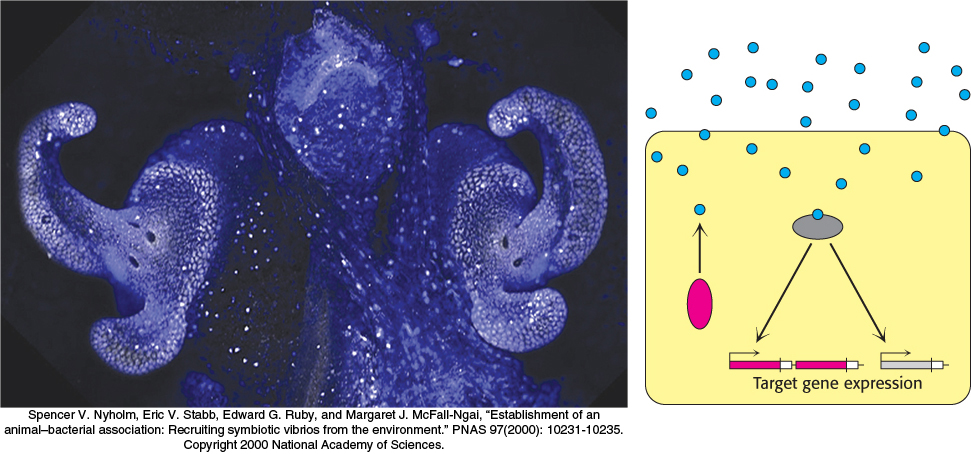The Control of Gene Expression in Prokaryotes
CHAPTER
31
925

Even simple prokaryotic cells must respond to changes in their metabolism or in their environments. Much of this response takes place through changes in gene expression. A gene is expressed when it is transcribed into RNA and, for most genes, translated into proteins. Genomes comprise thousands of genes. Some of these genes are expressed all the time. These genes are subject to constitutive expression. Many other genes are expressed only under some circumstances—
In this chapter, we will examine gene-
How is gene expression controlled? Gene activity is controlled first and foremost at the level of transcription. Whether a gene is transcribed is determined largely by the interplay between specific DNA sequences and certain proteins that bind to these sequences. Most often, these proteins repress the expression of specific genes by blocking the access of RNA polymerase to their promoters. In some cases, however, the proteins can activate the expression of specific genes. We shall learn about several different strategies that allow the coordinated regulation of sets of genes. Some genes are also controlled at stages beyond the level of transcription and we shall examine several mechanisms at these stages. Finally, we will examine several important examples of how gene expression is regulated in response to changes in the concentrations of specific molecules in the environment of prokaryotic cells.
926